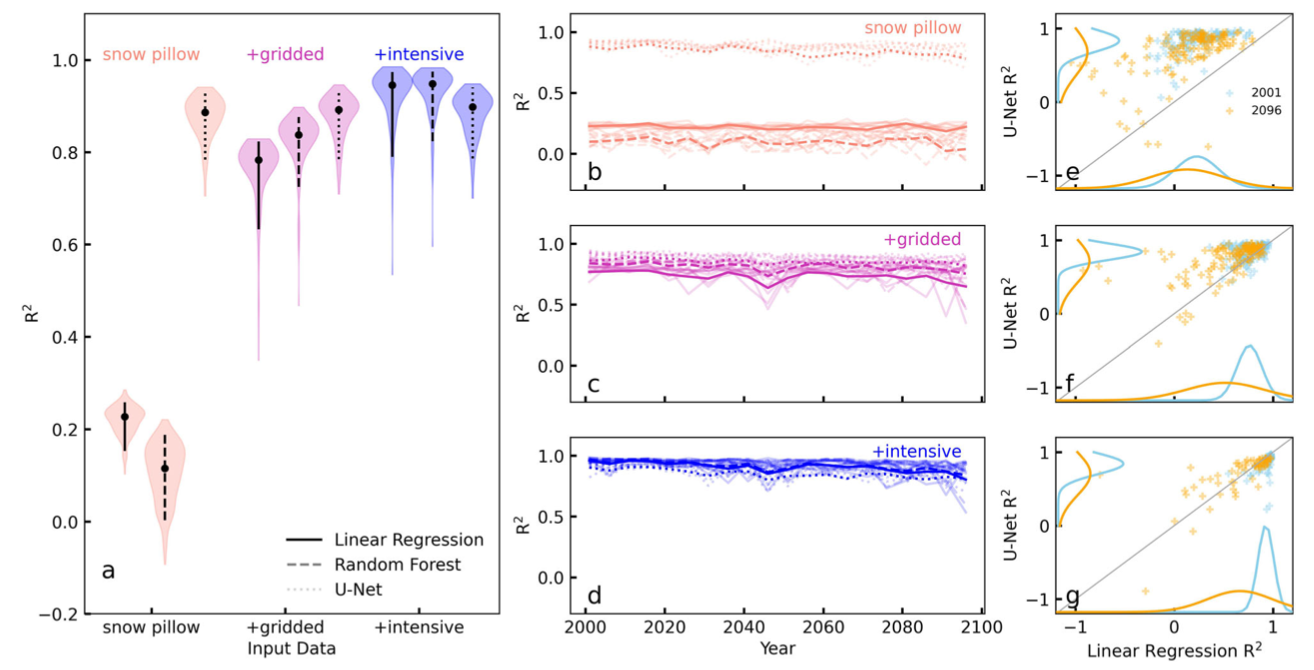Climate change-resilient snowpack estimation
Submitter:
Feldman, Daniel — Lawrence Berkeley National Laboratory
Area of research:
Surface Properties
Journal Reference:
Science
Climate change will create years where our mountains’ snowpack will be unlike anything we have observed in the past, but because our measurement systems for snowpack cannot move to new locations, our ability to measure this quantity is not resilient to climate change. We explored solutions for addressing this problem, and found that many non-traditional sources of data and artificial intelligence methods can be used to fill in the gaps left by our current systems.
Impact
For some climate-change impacts, the scientific community’s ability to actually observe those impacts will degrade in the future. For example, water resource managers around the United States are tasked with estimating snowpack and expected streamflow in mountains based on a small number of point measurements, but will be increasingly unable to do so using current measurements and methods. In this work, we show both the value of intensive measurements, like those collected during ARM's recent Surface Atmosphere Integrated Field Laboratory (SAIL) campaign in the Colorado Rockies, and artificial intelligence methods for establishing climate-change resilient snowpack estimation.
Summary
In the 21st Century, warmer temperatures and changing atmospheric circulation will likely produce unprecedented changes in western United States snowfall, with impacts on the timing, amount, and spatial patterns of snowpack. The ~900 snow pillow stations are indispensable to water resource management by measuring snow-water equivalent (SWE) in strategic but fixed locations. However, this network may not be impacted by climate change in the same way as the surrounding area and thus may fail to accurately represent unmeasured locations; climate change thereby threatens our ability to measure the effects of climate change on snow. In this work, we show that maintaining the current peak SWE estimation skill is nonetheless possible. We find that explicitly including spatial correlations—either from gridded observations or learned by the model—improves skill at predicting distributed snowpack from sparse observations by 184%. Existing artificial intelligence methods can be useful tools to harness the many available sources of snowpack information to estimate snowpack in a nonstationary climate.



